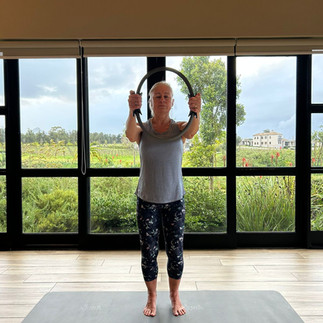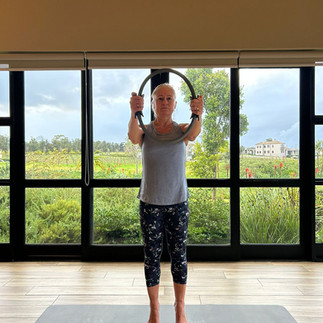Elevating Everyday Functionality with Pilates
- Chi Ingledew
- Jan 10, 2024
- 2 min read
This blog will look at the holistic benefits of Pilates for balancing muscles, strength, and flexibility.
In the pursuit of a healthy and active lifestyle, it is essential to engage in exercises that not only enhance strength and flexibility but also promote balanced muscle development and improved functional movement. Pilates has gained immense popularity due to its holistic approach to fitness, health and wellness - mentally and physically. By addressing the body as a whole and focusing on core strength, muscular balance, and flexibility, Pilates offers a multitude of benefits for everyday functional movement. Pilates helps balance the muscles in the body, while also improving strength and flexibility for enhanced daily functionality.
Balancing Muscles: Harmonising the Body's Alignment
Pilates emphasises the importance of balanced muscle development throughout the body. Through a series of exercises that target both large and small muscle groups, Pilates works to correct muscle imbalances that may result from our daily habits and activities. By addressing these imbalances, Pilates helps restore the body's alignment, promoting optimal function and reducing the risk of injuries.
For example, individuals who spend long hours sitting at a desk may develop tight hip flexors and weakened gluteal muscles. Pilates exercises, such as lunges and bridge exercises (lying supine with the pelvis in the air), target these specific areas, strengthening the glutes while stretching the hip flexors. This helps to rebalance the muscles, improving posture, stability, and overall movement patterns.
Strength: Building a Strong Foundation for Functional Movement
Pilates focuses on developing core strength as the foundation for all movements. While core strength is commonly associated with abdominal muscles, Pilates goes beyond traditional core exercises. It engages the deep stabilising muscles of the back, pelvis, and hips, creating a strong and stable center that supports the body during everyday activities.
By incorporating Pilates into your fitness routine, you can expect to develop a stronger core, improved spinal stability, and enhanced muscular strength throughout the body. This newfound strength translates into better control and efficiency in everyday movements, such as lifting heavy objects, carrying groceries, or even playing sports.
Flexibility: Enhancing Range of Motion for Fluid Movement
Flexibility plays a crucial role in maintaining optimal movement patterns and preventing injuries. Pilates promotes flexibility through controlled and precise movements that stretch and lengthen the muscles. By incorporating exercises that target both major muscle groups and the often-neglected smaller muscles, Pilates helps individuals achieve balanced flexibility.
Improved flexibility obtained through Pilates translates directly into daily activities. Whether it's bending down to tie shoelaces, reaching for items on high shelves, or simply moving with greater ease, increased flexibility acquired through Pilates enables individuals to perform these actions with reduced effort and a lower risk of strain or injury.
Pilates is a transformative exercise method that goes beyond building strength and flexibility. It will help the correction of imbalances and avoid the reinforcement of current imbalances making you a stronger, more mobile individual. By focusing on balancing the muscles in the body, developing core strength, and enhancing flexibility, Pilates empowers individuals with the tools needed for enhanced functional movement in everyday life. The harmonious development of muscles leads to improved alignment, stability, and posture, while increased strength and flexibility allow for efficient and fluid movement patterns. By incorporating Pilates into your fitness routine, you can experience the holistic benefits that contribute to a healthier, more functional, and vibrant lifestyle.










































Comments